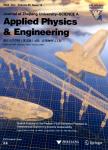Bi-dimension decomposed hidden Markov models for multi-person activity recognition
Bi-dimension decomposed hidden Markov models for multi-person activity recognition作者机构:Department of Automation Tsinghua University Beo'ing 100084 China
出 版 物:《Journal of Zhejiang University-Science A(Applied Physics & Engineering)》 (浙江大学学报(英文版)A辑(应用物理与工程))
年 卷 期:2009年第10卷第6期
页 面:810-819页
核心收录:
学科分类:0711[理学-系统科学] 12[管理学] 1201[管理学-管理科学与工程(可授管理学、工学学位)] 07[理学] 070105[理学-运筹学与控制论] 0701[理学-数学]
基 金:Project (No. 60772050) supported by the National Natural Science Foundation of China
主 题:Multi-channel setting Hierarchical modeling Hidden Markov model Activity recognition
摘 要:We present a novel model for recognizing long-term complex activities involving multiple persons. The proposed model, named ‘decomposed hidden Markov model’ (DHMM), combines spatial decomposition and hierarchical abstraction to capture multi-modal, long-term dependent and multi-scale characteristics of activities. Decomposition in space and time offers conceptual advantages of compaction and clarity, and greatly reduces the size of state space as well as the number of parameters. DHMMs are efficient even when the number of persons is variable. We also introduce an efficient approximation algorithm for inference and parameter estimation. Experiments on multi-person activities and multi-modal individual activities demonstrate that DHMMs are more efficient and reliable than familiar models, such as coupled HMMs, hierarchical HMMs, and multi-observation HMMs.




